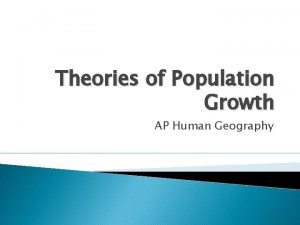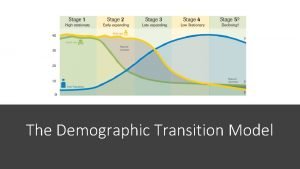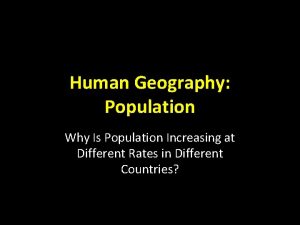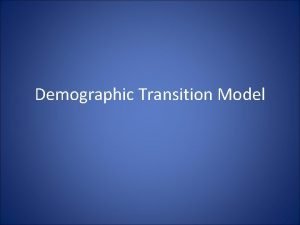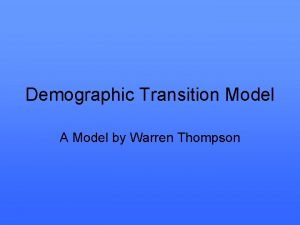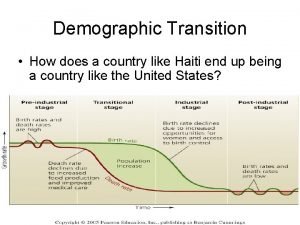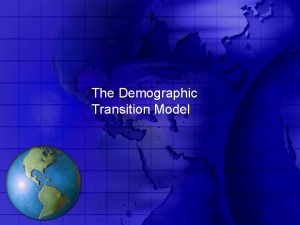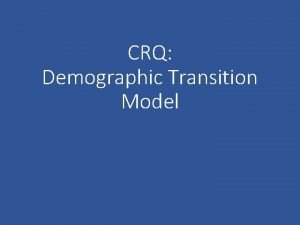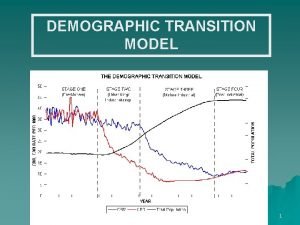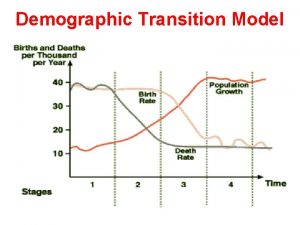The Demographic Transition Model Ivana Uzoka The Demographic








- Slides: 8

The Demographic Transition Model Ivana Uzoka

The Demographic Transition Model • Demographic Transition Models display a country’s process of change in a society’s population. • The demographic transition model consist of four stages * once a country has moved on to another stage, it cannot degrees, unless due to a supernatural force, such as a world war • Stage One: No Natural Increase • Stage Two: High Natural Increase • Stage Three: Moderate Natural Increase • Stage Four: No Natural Increase • Stage Five(? ): Decrease in Natural Increase


Stage One: Low Growth Pre-Industrial Era Most people in this period depended on hunting and gathering The very high birth rates and death rates produced virtually no long-term natural increase No present-day country is still in stage one

Stage Two: High Growth Transitional Era Mainly caused by the agricultural revolution, the population went from hunter gathers to sedentary farmers Two waves of countries entering the demographic transition Counties in Europe and North America enter stage two after 1750 as a result of the Industrial Revolution African, Asian, and Latin American countries entered in the second half of the 20 th century as result of the Medical Revolution Rapidly declining death rates combined with very high birth rates produce a very high natural increase

Stage Three: Moderate Growth Transitional Era Caused by and increase in jobs due to a good economy. Women now have access to education and are allowed to work A society enters stage three when people choose to have fewer children Many North American and European countries entered stage three in the late 20 th century Birth rates rapidly decline while death rates continue to decline and the rate of natural increase rates begin to moderate

Stage Four: Low Growth Industrial Era Caused by a change in lifestyle, the population as a whole are having less kids, yet medical advances have decreased the death rate A country reaches stage four of the demographic transition when the birth rate declines to the point where it equals the death rate. Zero Population Growth: The the natural increase rate approaches or equals zero Most European countries have moved to stage four

Stage Five (? ) Next possible stage in the demographic transition A country enters “stage five” of the demographic transition when the birth rate declines below the death rate and there is a negative rate of natural increase A few European countries such as Denmark and Germany have entered stage five As in Stage Four, this transition is caused by a change in lifestyle. The population as a whole are having less kids, yet medical advances have decreased the death rate
